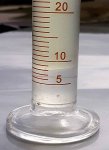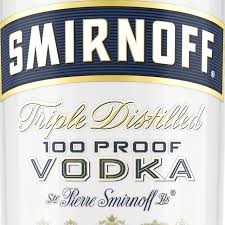Inquiring Mind
Active Member
I'm using ethanol-free auto-gas in my gyro, and that's how it could be quick checked if it is really ethanol-free or what percentage of the ethanol is in tested gas:
1. Fill tall glass with small amount of water (5ml is enough):

2. Mark the the glass at the level of water with sharpie, if you use non-marked glass. Fill the glass with the gasoline (about 10 times of water volume for easy estimation of percentage of ethanol in the gas. I added 45ml), then shake it well and let it settle. Here you can see the initial 5 ml of water absorbed 3 ml of ethanol from the gas, so the tested gas contained at least 6.6% of ethanol (3ml/45ml*100):

If tested fuel contained no alcohol, the water level after shaking the mix would stay at 5 ml.
1. Fill tall glass with small amount of water (5ml is enough):

2. Mark the the glass at the level of water with sharpie, if you use non-marked glass. Fill the glass with the gasoline (about 10 times of water volume for easy estimation of percentage of ethanol in the gas. I added 45ml), then shake it well and let it settle. Here you can see the initial 5 ml of water absorbed 3 ml of ethanol from the gas, so the tested gas contained at least 6.6% of ethanol (3ml/45ml*100):

If tested fuel contained no alcohol, the water level after shaking the mix would stay at 5 ml.
Last edited:


